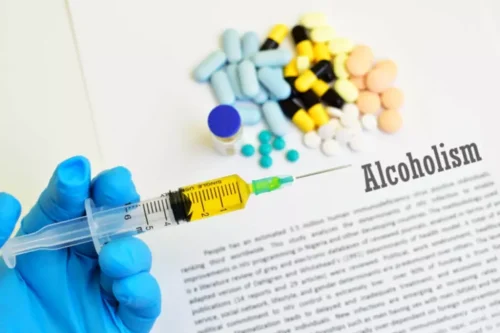
A single drink may put a person over their state’s BAC limit for driving. In this article, learn about how it feels to be drunk according to blood alcohol content (BAC) level. A person is sober or low-level intoxicated if they have consumed one or fewer alcoholic drinks per hour. The study's findings call into question the predominant theory that alcohol addiction arises from the brain's attempt to maintain stability despite repeated heavy drinking. That theory describes a “dark side of addiction” where repeated heavy drinking over time leads to changes in the brain systems involved in stress and reward. As a result of those changes, it is hypothesized that individuals shift from drinking for pleasure to drinking to avoid withdrawal and stress.
Effects on Skin and Body

Alcohol affects the central nervous system, slowing down brain activity and interfering with fine motor skills. Your body functions will slow so much that you will fall into a coma, putting you at risk of death. Usually a man will start to feel tipsy after consuming 2 to 3 alcoholic drinks in an hour. A woman will feel tipsy after consuming 1 to 2 alcoholic drinks in an hour. As you drink, alcohol goes into your bloodstream and affects your brain and body functions.
Mental Health Treatment
It is important to seek professional and medical help when deciding that it’s time to get sober. The first week is the most difficult as far as the severity of withdrawal symptoms goes. When you consume alcohol, it is absorbed through the stomach lining and into the bloodstream. From that first sip, it takes only five minutes to reach your brain where feel-good endorphins are released. These work to ease stress and anxiety, reduce feelings of pain, and boost mood.
BAC .10 to .12
Conversely, drinking in solitude can lead to introspection or feelings of loneliness. The environment shapes not only the experience of intoxication but also how emotions are expressed and perceived during that time. After experiencing what it’s like to be drunk comes the inevitable hangover for many people—a physical reminder that one has overindulged in alcohol consumption. Hangovers vary widely in intensity but typically include headaches, nausea, fatigue, sensitivity to light and sound, and general malaise.
Excitement and Impairment

Although you may feel lightheaded with this amount of BAC, you won’t lose coordination. Alcohol impairs the cerebellum, leading to delayed reaction times, poor coordination, and an unsteady gait. For more detailed information on how alcohol makes you drunk, check out this article. You’ll meet hundreds of fellow Reframers in our 24/7 Forum chat and daily Zoom check-in meetings.
In social settings like parties or bars, people often report feeling more energized and sociable while drunk due to the stimulating environment around them. Music playing in the background might enhance feelings of joy or excitement as individuals dance and mingle with one another. Alcohol affects the brain and https://ecosoberhouse.com/ every part of the body on a cellular level. In addition to being the most commonly abused drug, alcohol is probably the most dangerous drug.

- At higher BAC levels, individuals may struggle with decision-making, memory retention, and motor skills.
- It is also helpful to ask someone to take you home instead of you walking all the way to make sure you arrive safely.
- It's important to understand how alcohol affects you personally and to recognize when you've had enough.
Alcohol significantly impairs judgment and decision-making abilities. This impairment is due to its effect on the brain's prefrontal cortex, which is responsible for rational thinking and impulse control. As a result, individuals may engage in risky behaviors, such as driving under the influence or making poor financial decisions. The effects of alcohol can last from a few hours to longer, depending on various factors, including the amount consumed and individual metabolism.
- Binge drinking is defined as consuming more than 8 units of alcohol per day for men and more than 6 units per day for women, with 1 unit of alcohol being equal to half a pint.
- Being drunk refers to the state of intoxication resulting from the consumption of alcohol.
- If you start drinking on an empty stomach, the alcohol will pass into the small intestine, absorbing alcohol faster.
- Understanding this context helps clarify why two people can have vastly different experiences with alcohol even if they consume similar amounts.
- Long-term heavy drinking can lead to permanent changes in the brain, resulting in problems with understanding, memory, and logical thinking.
- It's essential to consume alcohol responsibly and be mindful of one's limits to maintain personal safety and well-being.
The experience of being drunk is complex and varies widely from person to person. Some people feel euphoric and carefree, while others may become emotional or even aggressive. Understanding the initial effects of alcohol and the subsequent feelings of relaxation and euphoria is essential in recognizing the early stages of intoxication. By being aware of these changes, individuals can make informed decisions about their alcohol consumption and ensure they prioritize their well-being and safety. The effects of alcohol can vary depending on factors such as the type and quantity of alcohol consumed, as well as individual tolerance levels.
Are There Any Risks Associated With Stopping Drinking Suddenly?
Driving or operating machinery is particularly dangerous at this level of intoxication. Legal limits what does being drunk feel like for driving under the influence (DUI) are typically defined in terms of BAC. In the United States, for example, a BAC of 0.08% is considered the legal limit for operating a motor vehicle.
It is important to note that even after the initial feeling of drunkenness wears off, alcohol can still impair cognitive and motor functions. The experience of being drunk can be divided into several stages, each characterized by different physical and emotional effects. Understanding these stages can help individuals recognize the signs of intoxication and avoid potential harm. When alcohol enters the bloodstream, it travels to the brain, where it affects neurotransmitters—chemical messengers amphetamine addiction treatment that transmit signals between nerve cells. The primary neurotransmitters influenced by alcohol are gamma-aminobutyric acid (GABA) and glutamate. Alcohol enhances the effects of GABA, which has inhibitory properties, leading to feelings of relaxation and sedation.
